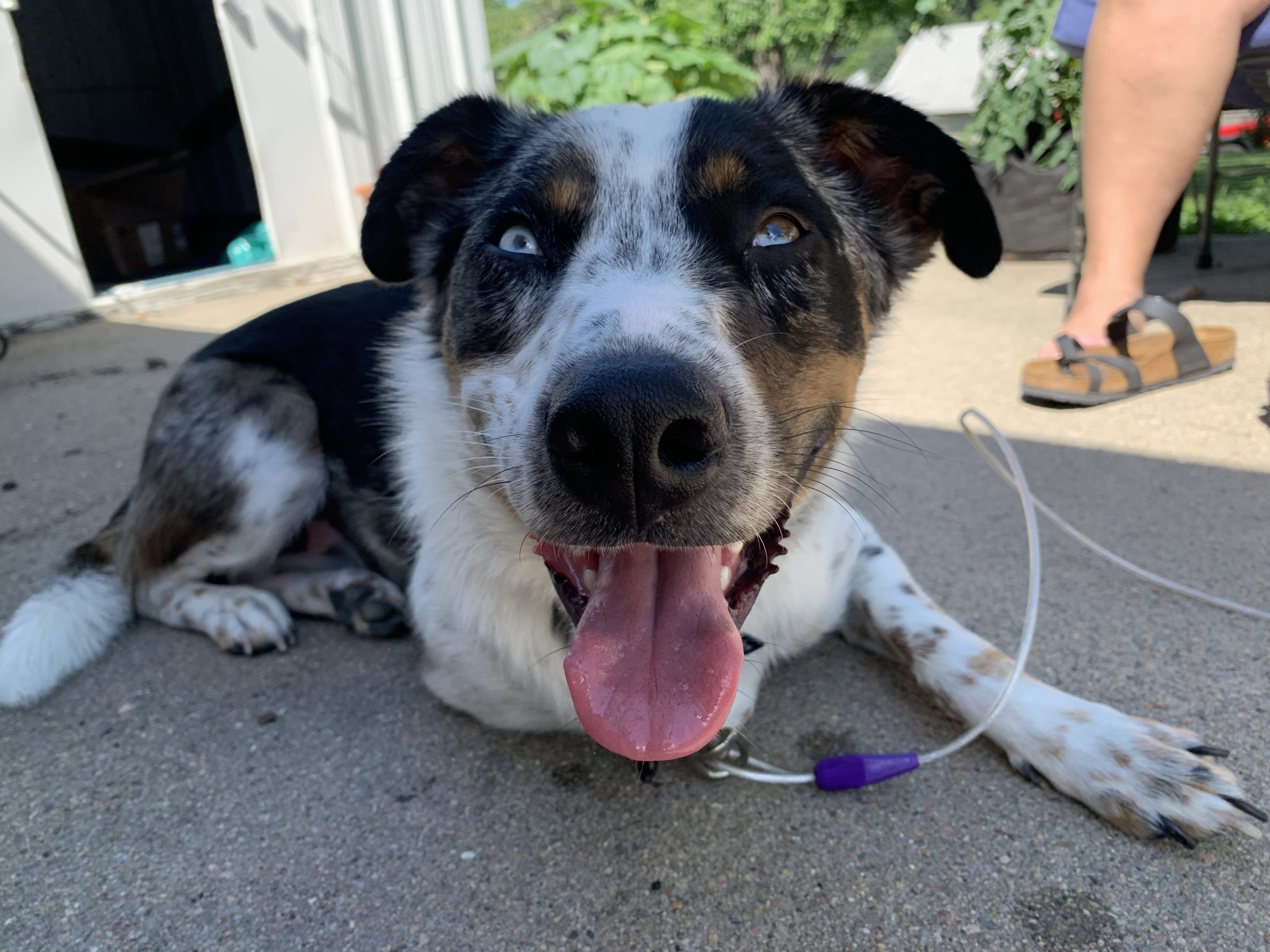Teaching a Territorial Shepherd Mix to Move Away from the Door When People Knock
By: David Codr
Published Date: June 30, 2020
For this Omaha dog training session we teach 1 year-old Australian Shepherd mix Roscoe to move away from the door when anyone knocks to reduce his reactive and protective behavior towards guests.
I saw several herding breed behaviors durring the session, punching me with his nose, leaning into me to steer me in different directions, posturing and nipping. I adopted softer body language to placate Roscoe, but there were times that he was still challenging or herding me. In fact he nipped so hard at one point that I had a bruise on my thigh for a week.
It didnt help that I was standing throughout the session as we did it outside due to CoronaVirus. To dogs, standing is the most commanding posture a human can assume. So to be standing, gensturing and talking for 3 hours was a lot for Roscoe to handle. I made sure to suggest future visits with guests (hopefully soon if we can get Corona under control) are kept shorter. Its always best to end on a success or without the behavior problem manifesting. A series of shorter, successful (non herding) visits strung together can help reduce the herding behavior.
At one point Roscoe started growling when I didn’t give him a treat I was holding because I was waiting for a sit first. Its clear that Roscoe see’s himself as equal to his humans or likely in charge of their safety. But since they didn’t see him as a leader, they didn’t follow his lead. This likely led to frustration in the dog which likely amplifed the dog behavior problems I mentioned previously.
I guided one of his guardians on how to disagree when the dog starts growling to get his way. I must say, in Roscoe’s case the grown wasn’t aggressive, I think it was more of a complaining / demanding growl. Not ideal, but not aggressive. If the guardians follow the other suggestions I made in this session and stand up and stand in between as I showed her (combined with proper exercise), he should learn that behavior is unwanted.
I spent of good portion of the session addressing the leader follower dynamic; suggesting an increase in exercise like the doggy stair master , puzzle toys like a snuffle matt and Omega Treat ball, the addition of rules and incorporating strcuture by petting with a purpose. I also recommended the guardians start rewarding desired behaviors when voluntarily given, something I call passive training.
Until the guardians change their routine so the dog sees them acting like leaders, the dog is going to continue to think it needs to correct and supervise humans who visit. He will chalange them at first, but once the dog sees the humans acting like leaders, it will greatly reduce his frustration and stress and allow him to take a passive role instead.
One of the activities that was associated with the dog’s protective behavior was guarding the door and rushing the door when guests arrive or things are delivered. I decided to use this as an opportunity to demonstrate how to train a dog to move away from the door instead of charging it. You can learn how to teach a dog to move away from the door when someone knocks by watching the free positive dog training video below.
This technique is a great example of the power of positive dog training. Instead of punishing or correcting the dog from the unwanted behavior, we provided it with a motivaiton to do what we want. The key is to go slow; practicing in small steps so the dog understands what do do throughout the exercise. You can use this approach for many other issues, even if you aren’t a professional Australian Shepherd dog trainer.
To help the humans remember everything we covered in this in home Omaha dog training session, we recorded a summary video I like to call the Roadmap to Success.
Categorized in: Dog Behavior


